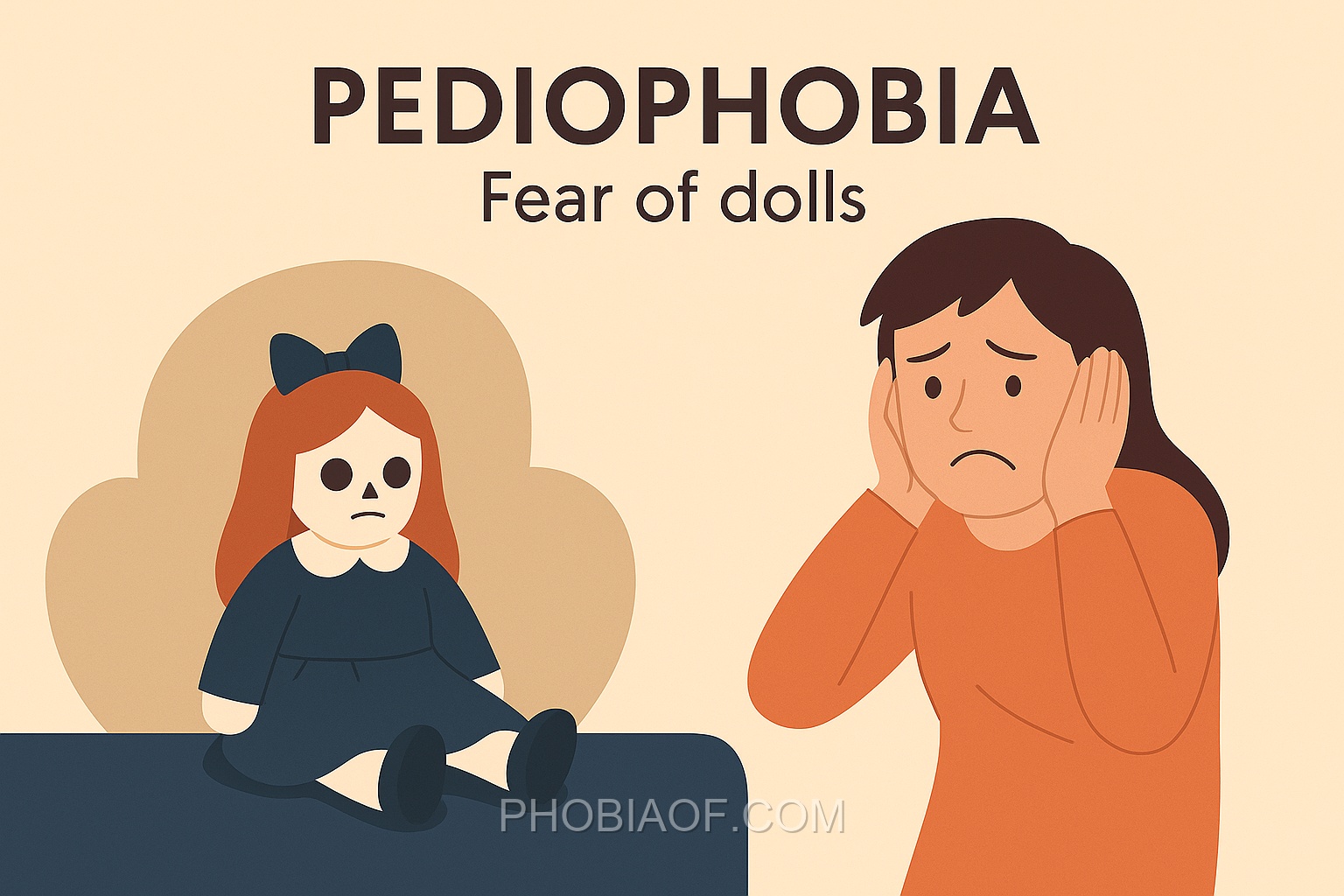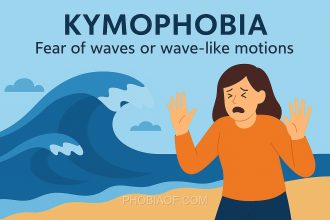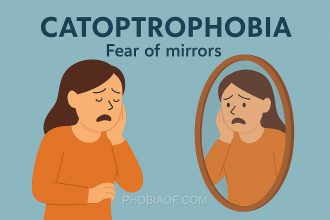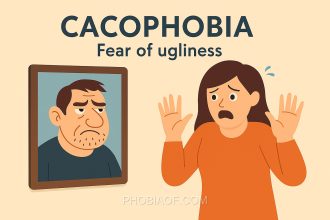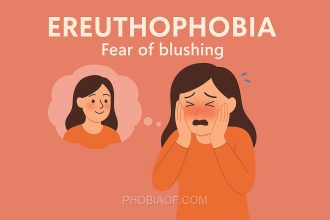Have you ever felt uneasy walking past a row of lifelike dolls, their eyes seemingly following you with an eerie gaze? If so, you’re not alone. This uneasy feeling is at the heart of Pediophobia, a specific phobia characterized by an intense fear of dolls.
Pediophobia comes from the Greek words “paidion,” meaning “little child,” and “phobos,” meaning “fear.” This term aptly captures the fear that some individuals experience when confronted with dolls, whether they’re traditional, antique, or modern robotic toys.
For those affected by pediophobia, the presence of dolls can trigger significant anxiety and discomfort. This fear can manifest in various ways, impacting daily life and leading to avoidance behaviors, such as steering clear of toy stores, museums, or any place where dolls might be present.
Here are some common ways pediophobia affects individuals:
- Anxiety and Panic: Encountering dolls can induce overwhelming anxiety, leading to panic attacks in severe cases.
- Avoidance: Individuals may go to great lengths to avoid situations where they might encounter dolls.
- Emotional Distress: The fear can cause significant emotional distress, affecting social interactions and quality of life.
Understanding pediophobia can foster empathy and support for those who experience this fear, helping them navigate a world where dolls are a common fixture.
Causes of Pediophobia
Pediophobia, the fear of dolls, can manifest for various reasons. Understanding these causes can help in addressing and managing the phobia effectively. Here are some potential causes:
- Genetic Predisposition:
Some individuals may have a genetic predisposition to anxiety disorders, which could include specific phobias like pediophobia. If someone in the family has a history of phobias, others may be more likely to develop similar fears.
- Traumatic Experiences:
A traumatic event involving dolls during childhood or any stage of life can lead to the development of this fear. Such experiences can leave a lasting impression, causing an irrational fear of dolls.
- Learned Behavior from Others:
Pediophobia can also be a learned response. If a child observes a parent or sibling displaying fear towards dolls, they might adopt similar feelings. The environment and people around us greatly influence our fears.
- Psychological Factors:
Certain psychological factors, such as a tendency towards anxiety or an overactive imagination, might contribute to this phobia. Dolls can sometimes appear lifelike, which might trigger fear in those who have difficulty distinguishing between reality and fantasy.
- Environmental Factors:
Exposure to media, such as horror movies featuring dolls, can instill fear, especially if consumed at a young age. Cultural stories and myths surrounding dolls can also play a role in developing this phobia.
Interestingly, some research suggests that the “uncanny valley” theory may be related to this fear. This theory posits that humanoid objects, like dolls, that closely resemble humans but are not quite lifelike can evoke feelings of unease or fear. Understanding these causes can be the first step towards overcoming pediophobia through therapy or gradual exposure.
Symptoms of Pediophobia
Pediophobia, the fear of dolls, can evoke intense fear or anxiety in those affected. Recognizing the symptoms is crucial for understanding and addressing this phobia. Here are some common symptoms:
- Intense Fear or Anxiety: Individuals experience overwhelming fear or anxiety when encountering dolls or even thinking about them.
- Panic Attacks: Sudden onset of extreme fear with physical symptoms such as trembling, dizziness, or difficulty breathing.
- Sweating: Excessive sweating may occur, especially when confronted with the phobic trigger.
- Rapid Heartbeat: The heart may race or pound erratically in response to the fear stimulus.
- Avoidance: A strong desire to avoid situations or places where dolls might be present, such as toy stores or children’s parties.
- Overwhelming Dread: A persistent feeling of dread or apprehension about encountering dolls.
- Nausea: Feeling sick to the stomach or experiencing gastrointestinal distress when near dolls.
- Emotional Distress: Intense feelings of distress or discomfort that can lead to crying or emotional outbursts.
These symptoms can severely interfere with daily life, making it challenging to engage in normal activities or social interactions if the phobia is severe.
Treatment for Fear of Dolls (Pediophobia)
If you are struggling with a fear of dolls, also known as pediophobia, it is important to know that you are not alone and that this phobia can be treated and managed over time. With the right approach, you can overcome this fear and regain control over your life. Below are some effective treatment options and coping strategies that have helped many individuals.
Proven Therapies:
- Exposure Therapy: This therapy involves gradually facing your fear in a controlled environment. By slowly and repeatedly exposing yourself to dolls, you can begin to reduce your fear response over time. A therapist can guide you through this process, ensuring that each step is manageable and safe.
- Cognitive-Behavioral Therapy (CBT): CBT focuses on changing the fearful thoughts associated with dolls. A therapist will help you identify negative thought patterns and replace them with more rational, calming thoughts. This approach can help reduce anxiety and change the way you perceive dolls.
- Counseling: Talking to a professional counselor can provide emotional support and help you understand the root causes of your fear. Counseling can also equip you with strategies to manage anxiety and stress related to your phobia.
Self-Help Coping Techniques:
- Relaxation Exercises: Techniques such as deep breathing, progressive muscle relaxation, or guided imagery can help calm your mind and body when you encounter dolls.
- Meditation: Regular meditation practices can help reduce overall anxiety levels, making it easier to confront your fears.
- Support Groups: Joining a support group can provide a sense of community and understanding. Sharing your experiences with others who have similar fears can be comforting and motivating.
In some cases, medication such as anti-anxiety medications might be prescribed for severe cases of pediophobia. However, it is generally recommended to focus on therapy and coping skills as the primary methods of treatment.
Remember, seeking professional help is a sign of strength, not weakness. If your fear of dolls is interfering with your daily life, consider reaching out to a mental health professional for guidance and support. You can overcome this fear with time, patience, and the right resources.
Conclusion
Understanding the causes and symptoms of pediophobia can be a significant first step towards managing or overcoming this fear. By recognizing the underlying factors that contribute to the fear of dolls, individuals can begin to unravel their own experiences and reactions, paving the way for effective coping strategies.
It’s important to remember that you are not alone in facing this phobia. Many people have successfully navigated their way through similar challenges, often emerging stronger and more resilient. With time, patience, and the right support, it is possible to reduce the impact of pediophobia on your life.
If you find that your fear of dolls is interfering with your daily activities or causing significant distress, consider reaching out to a mental health professional. Therapy can provide valuable insights and techniques tailored to your needs, and discussing your concerns with a doctor can offer additional support and guidance.
Remember, overcoming a phobia is a journey, and taking the first step towards understanding and addressing your fear is a powerful move towards a more empowered and fulfilling life.
